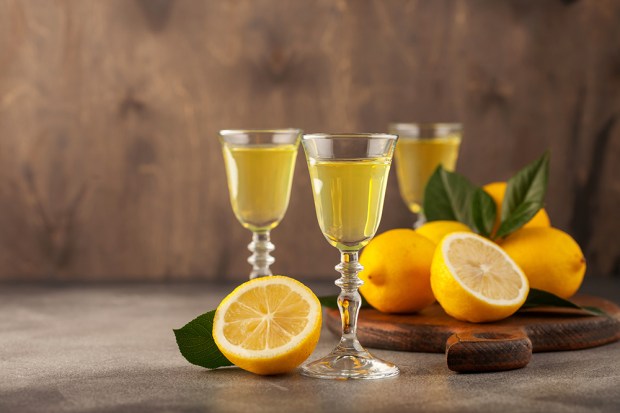I first ate at the London version of Harry’s Bar in the early 1990s. Back then, Jeffrey Archer and I would give each other dinner about three times a year. It was my turn and he suggested Harry’s, where he was a member but I could pay (on expenses, needless to say). I remember the meal vividly because it was awful. Choosing the same dishes, we started with a risotto, which was just rice plus ingredients. Then there was a leg of lamb for two, grossly over-salted. Had I been the nominal host as well as the real one, it would have gone back to the kitchen with a flea in its ear. Two glasses of competent champagne were followed by a nothing-special Chianti: bill, £208 — to repeat, at early 1990s prices.
I concluded that this was a place for those with more money than taste, to preen and be seen, looking out for Bimbo Bimbette or Florette Floosie or other celebrities whom I had never heard of. I was wrong. The next time I was a guest — arriving with politely disguised unenthusiasm — the food was outstanding. Thus it has remained, perhaps occasionally slipping down to mere excellence. There is no better Italian food in London and it is vastly better than its Venetian namesake.
So a horrid thought assailed me. Had they done something to Jeffrey’s food? He has occasionally, surely unjustly, been accused of failing to temper the wind to those who are not supposed to answer back. Was revenge taken? Finally, I confronted the head waiter: had someone deliberately messed up (I did not say ‘mess’) Lord Archer’s dinner? I must report that the denials were unconvincing.
Anyway, there was no messing the other evening. A glorious risotto with white truffles was followed by a contro-filetto of milk-fed veal. The ‘milk-fed’ might not be something to stress on English menus. There are those who would be distressed by images of sweet little calves snuggling up to their mummies. But that was as good a piece of veal as I have ever eaten. Instead of living to plod through the banalities of a bovine existence, the animal met a noble end while still in its prime. Greater love hath no calf than this, that it lays down its life for its diners. Those who object to eating veal: next thing we know, they will complain about bullfighting.
Moreover, we toasted our calf’s passing with serious wine. The Trocard family have been making claret in and around St Emilion since the 1620s. Benoit, from the latest generation, intended to pursue a different career. But in 2002, after business school in Ireland, he went home to help with the harvest — and stayed. There was a piece of land on a slope above Saint-Christophe-des-Bardes. Clay on limestone, it looked promising. He took it over and so it proved. On it and other vineyards, Benoit produces a range of bottles. He was the first vigneron in Bordeaux to plant chardonnay. That must have taken courage. Although the Dubreuil chardonnay is still only a work in progress, the boss is a determined man and a perfectionist. His chardonnay will have its day.
Clos Dubreuil already does. Benoit’s principal wine, it has fruit, minerality and length. We tasted the ’06 and the ’12. As expected, the 2012 needs more time, but so does the 2006. Overwhelmingly merlot, they have easily enough structure to please those of us who prefer Left-bank wines and their gravelly underpinnings. These are promising novices, to the extent that Dubreuil is already producing a second wine, Clos Anna, which shares all its senior’s qualities. We drank the ’13. Again, it will last.
There was one disappointment. Clos Dubreuil has only seven hectares and Benoit is gaining a reputation. The wine offers no solution to the search for good Bordeaux at a bargain price. That must continue. Happy New Year.
Got something to add? Join the discussion and comment below.
Get 10 issues for just $10
Subscribe to The Spectator Australia today for the next 10 magazine issues, plus full online access, for just $10.
You might disagree with half of it, but you’ll enjoy reading all of it. Try your first month for free, then just $2 a week for the remainder of your first year.















Comments
Don't miss out
Join the conversation with other Spectator Australia readers. Subscribe to leave a comment.
SUBSCRIBEAlready a subscriber? Log in